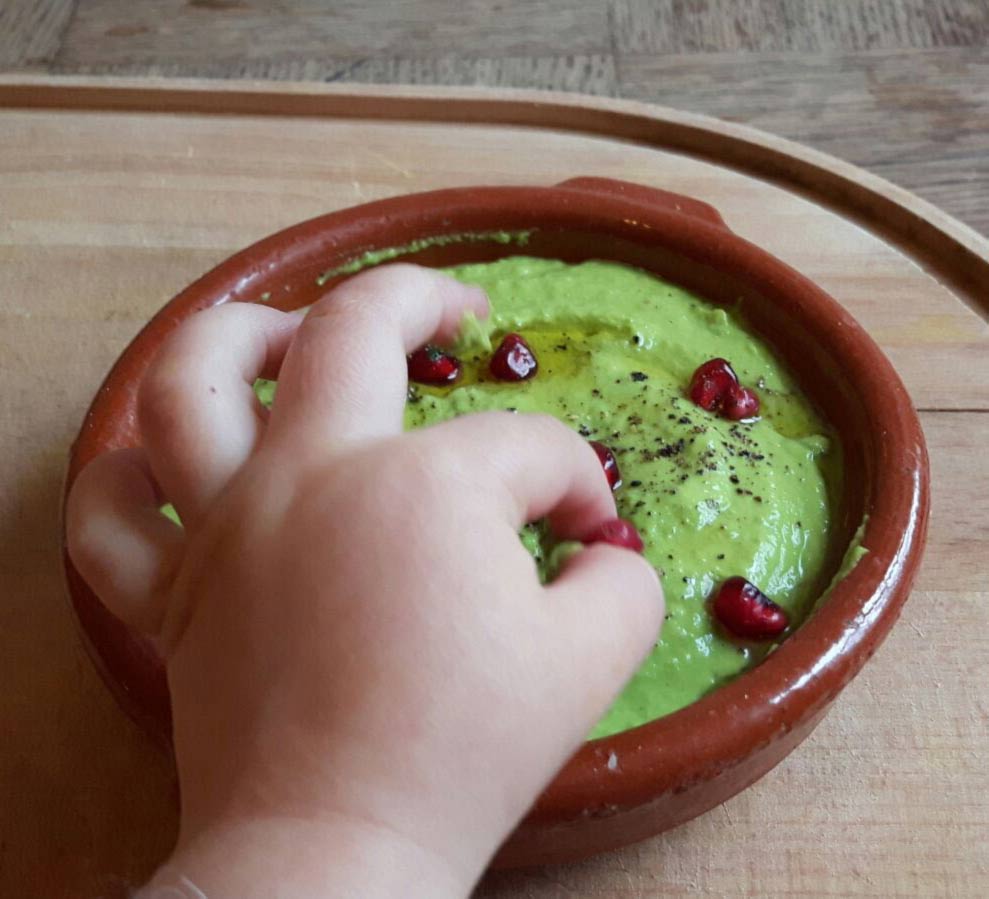
Nourishing Families: 5 Ways To Get Kids To Eat More Veg
By Rosie Blunden
Vegetables have always been troublesome for children. This may be something that has increased since the rise of processed and industrialised foods, but it is commonly known that kids can be picky when it comes to veggies.
As a mum to two young girls, I want to take care of what I feed them whilst at the same time honour their natural phases and development. I want to understand how can I, without force, introduce them to a wide variety of healthy nutritious foods and allow them to discover what they like, what they want, when they feel ready for it.
So, when it comes to getting more vegetables into children’s daily diets, I have come up with five tips to share with you that I find useful.
1. Soups
Soups are a great way to get vegetables into our little ones. When my babies were at weaning age soup played a big part in our lives. In fact, we still eat it around twice a week. They may not always be a fan but this seems to go in phases. Sometimes they lap it up and other times they are not interested at all. This is generally the case with children and most foods, so try not to get put off by it.
The key is to make soups tasty and flavourful.
If you are preparing a soup from only vegetables then start off by softening leeks or onions in a knob of butter. Do this slowly and on a low heat. It may take at least 10 minutes, but it will give a richness and depth to the soup. For soups that are lightly spiced or have curry flavours, try using coconut milk as your liquid. This will add a creamy texture and sweetness that most kids should love.
The consistency is crucial. The aim is to try and get your children to eat more veggies, so a broth style soup with all the bits visible may not work at first. In fact, you are more likely to opt for the blended version. Use a jug blender if you have one, rather than the hand-held stick blenders, to really get that silky smooth texture.
My advice is keep it simple. Find a few recipes that you like and stick to them. Rotate them on your weekly menus and make up big batches. You can always freeze what you have leftover from mealtime.
More Top Tips
- If you need to, disguise your soup in order for it to be attractive to your kids. Take the attention away from the food for a moment and make a little game around it. Sometimes words can be key, so get creative and come up with names together for your creations.
- If you have a baby who is not yet capable of feeding themselves, it might be easier to do soup in a cup and hold it for them. It can be a bit laborious on a spoon for younger ages.
- You can also play around and make toppings fun. In our family, we often put a splash of tamari soy sauce, a drizzle of olive oil and toasted sunflower seeds on top.
- If you’re feeling creative and have more time then make a nutritious stock to use instead of water. If you eat meat then a stock made from bones is wonderful to include. This will add flavour and contribute many health benefits. For vegetarian families, delicious stocks packed with nutrients are easy to make (see recipe below).
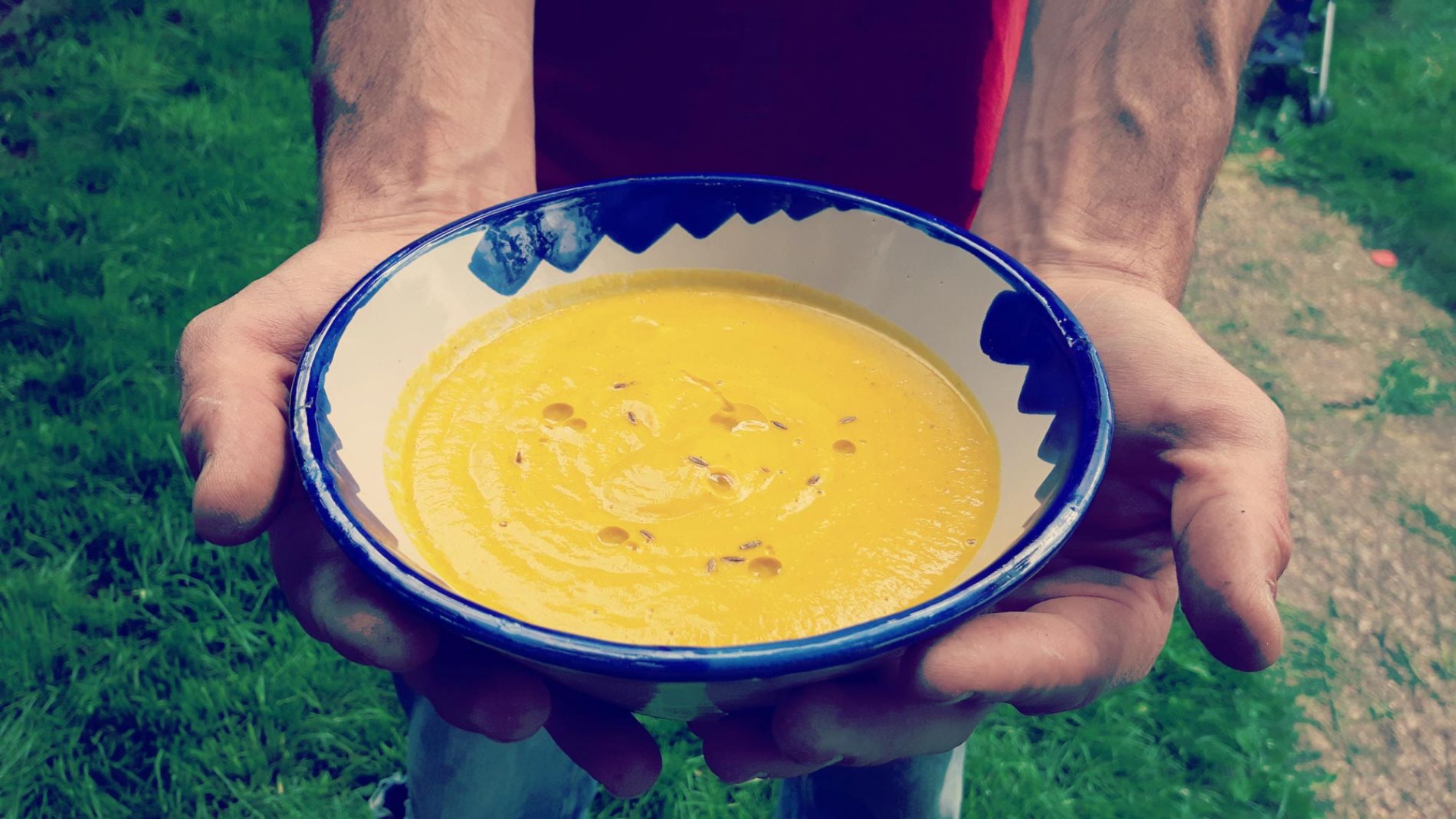
Vegetarian Soup Recipe
Carrot, Cumin & Coconut Soup
Ingredients: makes approx 4 portions
- 1 leek
3 garlic cloves
Knob of ginger
8-10 medium carrots
1 can coconut milk
2 tsp toasted cumin seeds
2 tsp toasted coriander seeds
1 ½ tsp turmeric powder
2 bay leaves
Ghee or coconut oil
Method:
- Roughly chop the leeks, carrots, garlic and ginger.
- Heat the ghee/coconut oil on a low heat and add the leeks. Sauté for at least 10-15 minutes, adding splashes of water/stock to keep them from burning. You want the leeks to turn soft and sweet.
- Whilst the leeks are softening, toast the coriander and cumin seeds in a dry frying pan. Once the leeks have softened, add all the spices and bay leaves to the pot. Stir well and add a splash of water/stock to keep things moist. Simmer for 2-3 minutes.
- Add the carrots and stir well.
- Open the coconut milk and pierce a hole through the thick layer of cream at the top. Pour all the liquid from underneath into the pan and save the thick creamy layer for later.
- Depending on how big your carrots are, you may need a bit more liquid to cook them in. Add enough water/stock to cover everything in the pan. Continue to simmer until the carrots are soft (approx 20 mins).
- When everything has cooked, stir in the layer of coconut cream that you saved in the tin.
- Use a jug blender (leave to cool a little bit before you do this) and blend in batches, until smooth and creamy. This will take a few minutes per batch. Place the soup back in the pot until ready to serve.
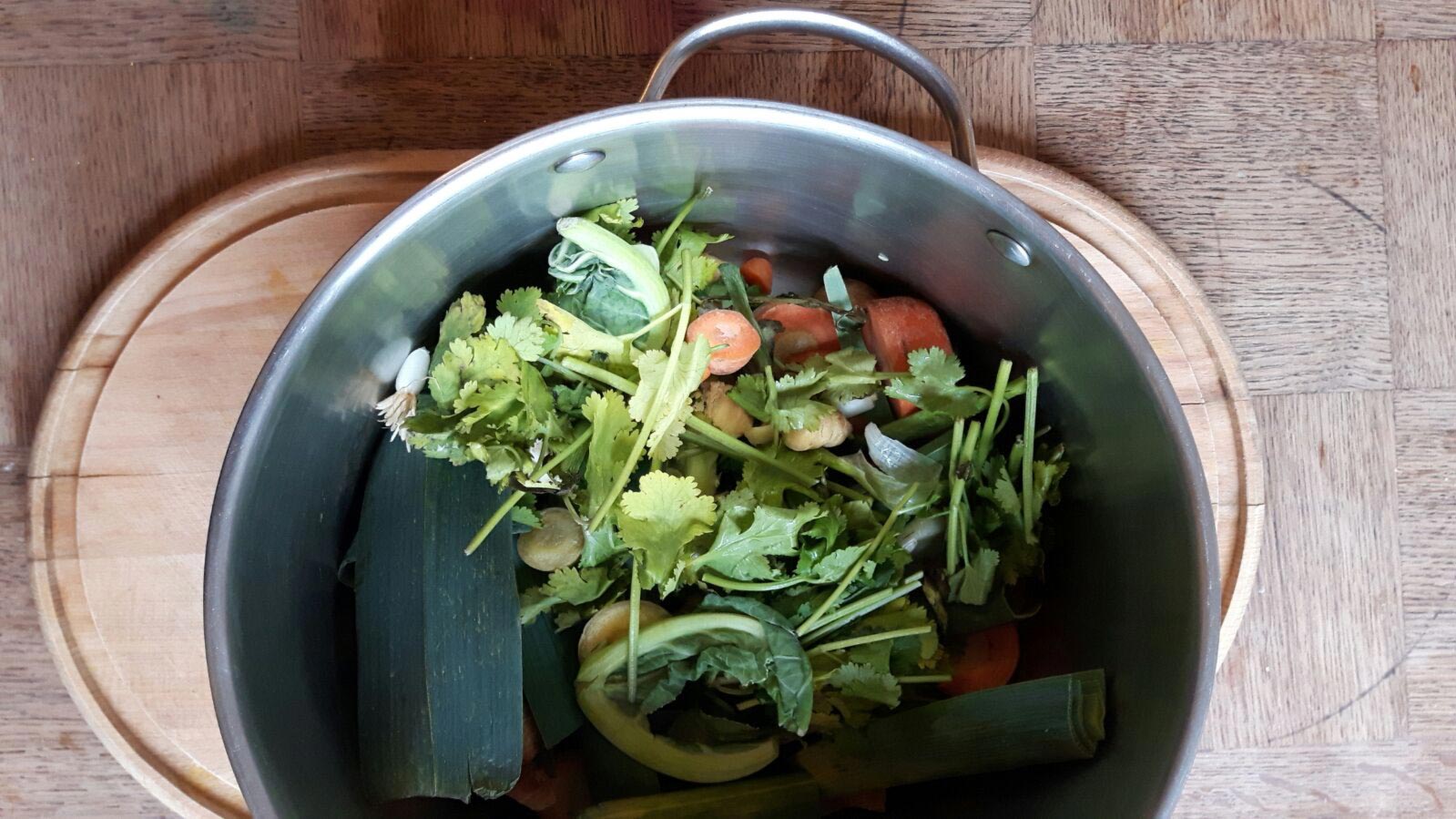
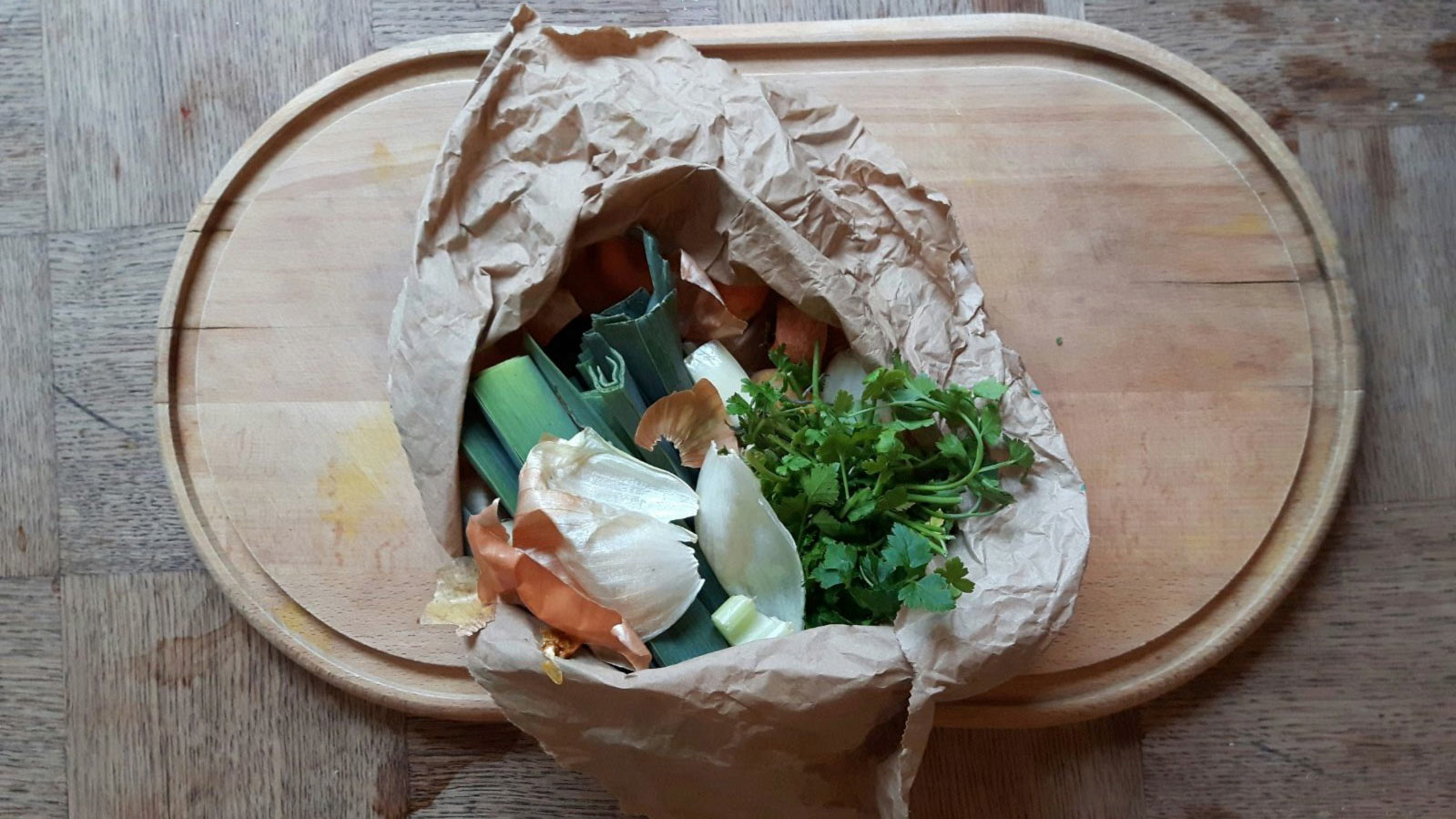
Vegetarian Stock Recipe
To create a veggie stock you will either need whole vegetables or the trimmings and peels left over from preparing a meal. Also perfect for using up those odds and ends that you need to find something to do with.
The following work well:
- Carrots, parsnips, sweet potato, celeriac, turnips, root vegetables in general
Celery, leeks, cabbage and cauliflower leaves, broccoli stems and parsley stalks
Onions, garlic and ginger
Lemongrass and bay leaves
Method:
Wash well and add to a large saucepan. Bring to the boil and simmer for approx 1-3 hrs.
To increase depth of flavour and boost nutrients add:
Seaweeds – such as kombu, dulse, wakame and arame
Dried shiitake mushrooms
2. Smoothies
Generally, kids love smoothies. Especially if they are a fun colour and they can get involved in making them.
If you have a high speed blender you can pretty much throw anything in.
For example, if I am making a banana smoothie with a plant based milk, chia or flax seeds, cinnamon and an apple or pear, then I always throw a carrot in too. This way it will get blended up completely and no one would notice it was there.
If your kids are not put off by the colour green then spinach is a great one to throw into smoothies. It blends well, as does cucumber.
You can also make fun colours by including blueberries, strawberries or raspberries. Turmeric or bee pollen with bananas also makes for a gorgeous golden yellow colour.
Juicing can also be a good way to get more veggies into their diet. Try a juice of sweet vegetables such as beetroots or carrots with an apple or pear, celery and cucumber. Again let them help you and get involved, make it an activity and have fun naming your creations and coming up with colours together.
Pink Smoothie Recipe
Ingredients: serves 2
- 1 banana
Handful of frozen raspberries
Sprinkle of flax seeds
Oat milk (or milk of your choice)
1 organic carrot (only add if you have a high speed blender)
Method:
Add all the ingredients to your blender and blend until smooth.
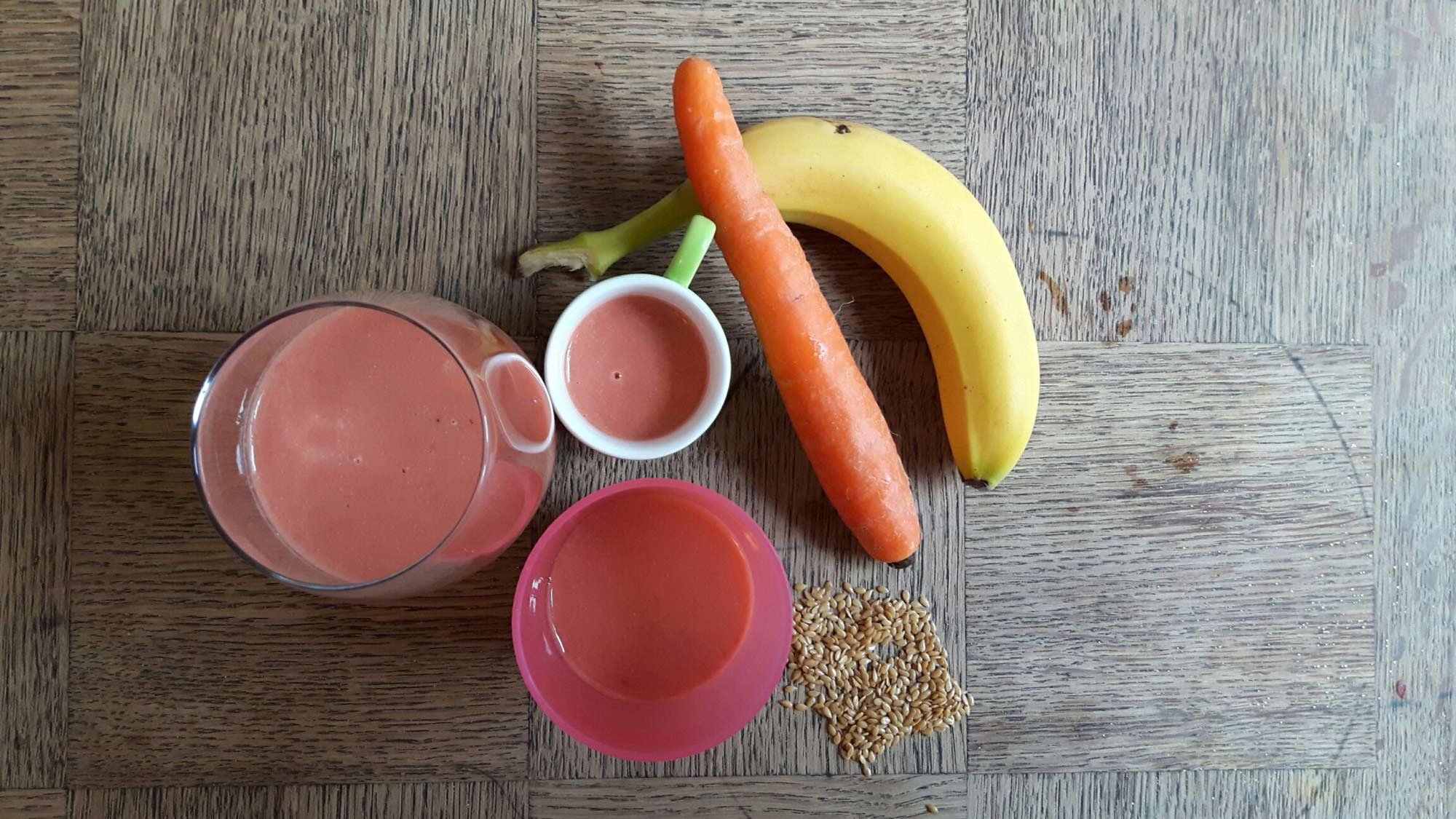
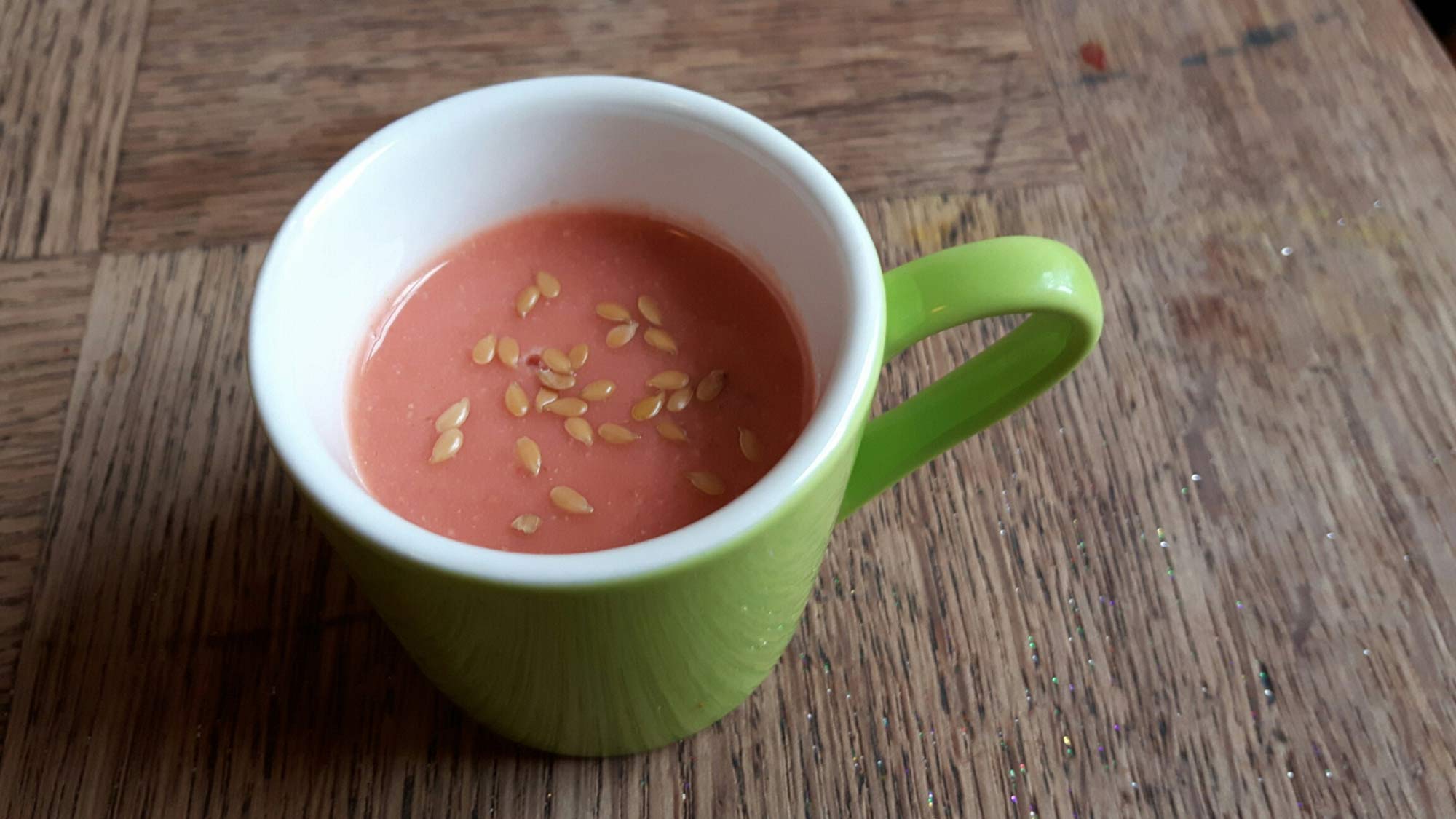
3. Disguise them in familiar meals
I know this one might be obvious, but some kids seem to have a radar for even the tiniest pieces of veg that they are not a fan of. More often than not we can get away with it, so it’s worth a try sneaking them in wherever you can.
The visual aspect is also a huge part of how we receive food. How you cut vegetables or present your dishes can also make a big difference.
If your child will not eat anything where a vegetable is visible, then blend them into the dish. Sneak them in that way, whilst continuing to educate your child on the benefits.
The following dishes are good hearty family meals, perfect for adding diced or grated veggies:
- Fishcakes
- Shepherd’s or cottage pie
- Fish pie
- Stir-fries
- Pasta sauces
- Bolognese – meat or lentil
- Soup and stews
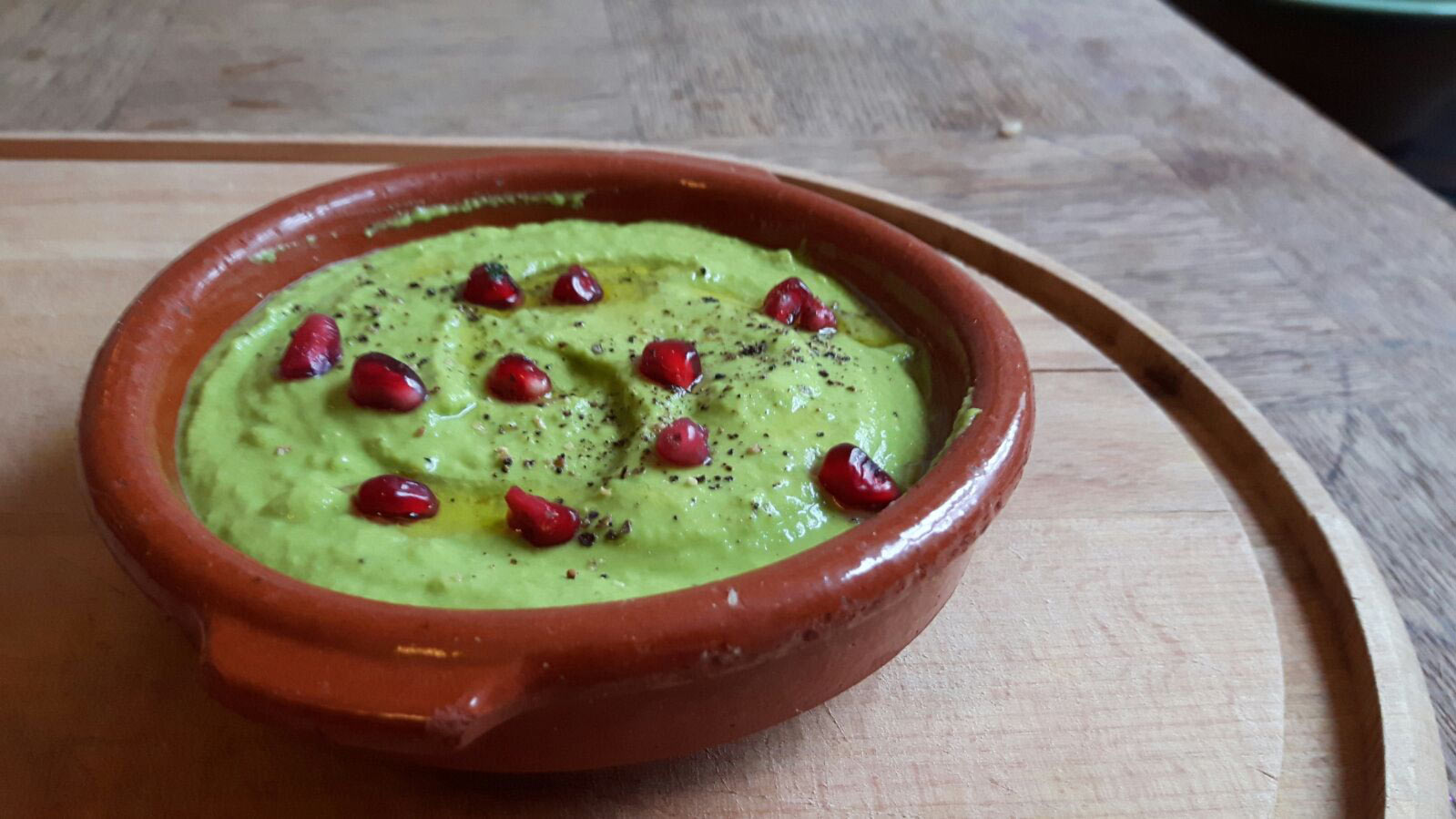
4. Dip
Dips come in such a variety of forms and flavours and make a perfect snack or addition to any lunch, picnic or dinner. My oldest girl who is now three and a half, has a friend who LOVES hummus. My girl has never been a fan, but she is a fan of tahini (ground sesame seed paste that is a main component in hummus). If I make her a little dip out of tahini and serve it with carrot sticks then she will eat them all.
My one and a half year old is only now getting used to tahini, but she loves the idea of a dip. Put a bit on her plate and she’ll go ‘dip dip dip’ with whatever she has in her hand.
If your kids are into dips then this is brilliant way to get nutritious foods into them. A simple homemade hummus for example contains a wide range of nutrients. So get creative and add different ingredients to your blender!
Other ideas for dips:
- Hummus – play with variations and colours, by adding roasted beetroot, pumpkin or butternut squash to the classic hummus recipe
- Make dips from other beans – like cannellini, butter beans or red lentils
- Raita or yoghurt dips (so many variations)
- Pea and/or broad bean dips (easy to make with frozen peas and broad beans)
- Tahini dip/sauce (recipe below)
Tahini Dip
Ingredients:
- Tahini
Lemon juice or balsamic vinegar
Water
Method:
- Put the desired amount of tahini in a bowl. Roughly 2 tablespoons will be enough for a small bowl of dressing.
- Squeeze in the lemon juice OR add balsamic vinegar. Half a lemon should be fine for 2 tablespoons of tahini, but you can taste at the end and see if you want more. The acidity of lemon balances the bitterness of the tahini. Balsamic vinegar will create a sweeter dip.
- Use a teaspoon and mix the tahini and lemon or balsamic together until it becomes stiff.
- Now, little by little, add splashes of water and mix well. The mix will go lumpy at first but then will become smooth as you continue. Keep adding water until you have your desired consistency. If I am serving this with carrot sticks as a dip, then I make it quite thick. If using it for a salad dressing, which this also works well for, I would make it thinner by adding more water.
5. Lead By Example
Children are influenced by their environment and will mimic what is around them. If you are trying to get your kids to eat more vegetables but they don’t see you eating or enjoying yours, it will be more difficult to get them on board.
Food can often be a troublesome area for children. Why?
It is because here they can assert their power. They can tell you no, push it away, like it one day and not the next or not eat at all…and so it goes on. How do we as parents deal with this potential minefield?
First, trust them. Sometimes when they don’t want to eat, it’s because this is what is right for their bodies at that moment. If we stay relaxed around food then that means more enjoyment for all and less power struggles from them.
If you have certain foods in your house because they suit you and you love them, don’t change that for your children. Of course, this has to be in context. I am not saying if you love chilli’s for instance then keep feeding them to your kids. What I am saying is adapt to their needs but serve the food you are happy with. They will soon get used to what is the norm in your household.
For example, I love and believe in natural whole foods. This is what I try to cook and provide for my family. My 3 and a half year old would be happy to live off cheese, bread, butter, honey, roasted chicken legs and steak. So she is not always the happiest customer when she sees a vegetable stew on the table. But more often than not, with some encouragement, she will eat it and show some sort of appreciation, even if not in words.
When she was 6 months old and first started eating, I often felt unsure of myself and what I was feeding her. I had times where I felt drawn to other peoples way of doing things or buying ready-made baby foods. This is easy to do as a parent but we need to be careful as it can be a long slippery slope. Before you know it, you’re pandering to your six-year-olds fussy requests, trying to please them and not serving the food you feel ok with.
So, work out what you feel comfortable with and stick to those foods. If you have a day where that isn’t possible for some reason then don’t worry, tomorrow is another day. The last thing we need to add is a pile of guilt on our plate!
Finally, to remind you that it’s all about you!
Tricky to accept, I know.
You are the person who can lead by example. Try to make the effort to sit down to eat your meals and slow down when eating. Show gratitude, eat a variety of foods and be positive. Your children will look at you for a response to a new food, so best to make it one of enjoyment and delight.
Remember have a plan, think about how you want your kids to eat and what you feel happy with:)
We hope you find this article useful and would love your feedback on anything you try. Feel free to get in touch and interact with us via our Facebook group. You can also find more resources over at our Instagram site and our You Tube channel.


